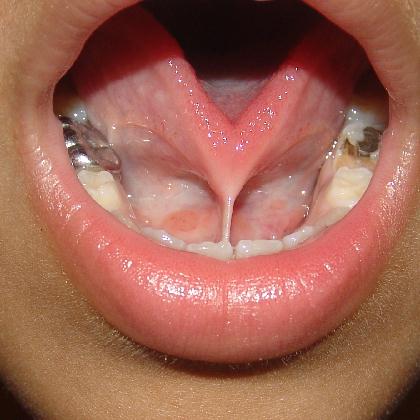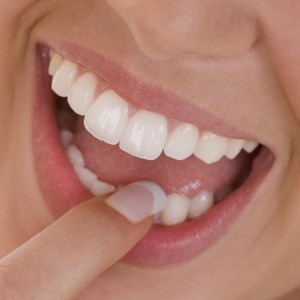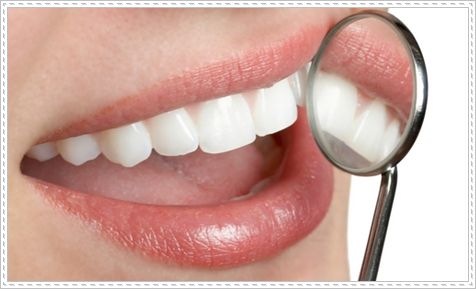Getting used to dentures may seem daunting at first, but after a little practice, using and caring for your dentures will seem like second nature. Whether you use adhesives to hold your upper, lower, or both sets of dentures in place is purely a personal choice. If you do use denture adhesives, learning to remove your dentures is one of the denture-wearing skills you’ll quickly master with just a little practice. Within a week you’ll be a seasoned pro. Continue reading
Monthly Archives: October 2011
Increased saliva in your mouth?
An increased salivary secretion in termed as sialorrhea or ptyalism.Â
Mechanisms
- The secretory innervation of the salivary glands is primarily under the control of the parasympathetic nervous system.
- Stimulation of the parasympathetic system causes profuse secretion of watery saliva.
- Some person are unable to swallow their saliva fast enough to prevent drooling
What causes dry mouth and how to overcome it
 Dry mouth is also known as xerostomia. Xerostomia is not a disease but a subjective complain of oral dryness resulting from reduced saliva flow. However, dry mouth can be associated with certain medical conditions such as diabetes , sjogren syndrome and etc. Â This is why you should not ignore and get a professional consultation if you are suspecting that you are suffering from dry mouth.
Dry mouth is also known as xerostomia. Xerostomia is not a disease but a subjective complain of oral dryness resulting from reduced saliva flow. However, dry mouth can be associated with certain medical conditions such as diabetes , sjogren syndrome and etc. Â This is why you should not ignore and get a professional consultation if you are suspecting that you are suffering from dry mouth.
How to Remove a Stuck Ring With Dental Floss
It’s summertime, which means that hands swell and rings get stuck on them. Don’t panic, and don’t rush to cut it off either. There are some simple things you can do to remove it safely.
First, try to place your index finger gently on the stuck ring, and thumb under, then start twisting the ring gently back and forth, while slowly pulling the ring out. Make sure that you don’t pull and tug too much. It could cause additional swelling and make it even harder to remove the ring. Continue reading
Tongue Tie? Unable to speak Properly? Find Out Why And How to Correct It.
 Tongue-tie is also known as Ankyloglossia. It is a condition in which the lingual frenulum is either too short or forwardly placed limiting the movement of the tongue. Reports of partial tongue-tie affecting several generations., suggest a possible genetic basis for the minor variation in the attachment of genioglossus muscle. It may be traumatic or congenital.
Tongue-tie is also known as Ankyloglossia. It is a condition in which the lingual frenulum is either too short or forwardly placed limiting the movement of the tongue. Reports of partial tongue-tie affecting several generations., suggest a possible genetic basis for the minor variation in the attachment of genioglossus muscle. It may be traumatic or congenital.
Ingredients of Dental Fillings
When you get a tooth filling done at your dentist, do you not wonder about the ingredients of the dental filling he/she is putting into your mouth? Each dental filling has its own composition and the deciding factors for the type of dental filling you will get are the size of the cavity filling or condition of the tooth, dental filling cost and the availability of the material in the dental office. Continue reading
How to Motivate Your Kids to Brush Their Teeth
Until your kids are about 6 years old, you will probably have to brush their teeth for them. After that, though, it will be up to them to do it on their own. Teaching kids to brush their teeth is not always an easy part of parenting, but it’s something that must be done.
If you have a hard time getting your kids to brush their teeth, empower and inspire them to take “ownership†of their dental hygiene responsibility, by creating their very own dental hygiene kit with them. Continue reading
Home Bleaching : Making your teeth looks whiter and brighter yourself
Bleaching is a procedure which involves lightening of the colour of a tooth through the application of a chemical agent to oxidize the organic pigmentation in the tooth.
Tooth bleaching today is based upon hydrogen peroxide as an active agent. Hydrogen peroxide may be applied directly or produced in a chemical reaction from sodium perborate or carbamide peroxide. Hydrogen peroxide acts as a strong oxidizing agent through the formation of free radicals, reactive oxygen molecules and hydrogen peroxide anions. These reactive molecules attack the long chained, dark coloured chromophore molecules and split them into smaller, less coloured and more diffusible molecules.
How to Determine if a Filling is Needed
Our teeth are constantly being attacked by acid produced by plaque bacteria as well as by the acidic foods and drinks we consumed. Acids cause damage below the tooth surface, causing microscopic holes in the tooth. If the acid damage continues over a period of time, the tooth becomes so fragile that a hole or pitting becomes visible in the tooth. As the hole gets bigger, the tooth will need a filling. Continue reading
How to Remove Chewing Gum From Dentures
Dentures come at a high price and must be properly taken care of so they last a long time. Dentures today have the look and feel of your natural teeth. Unfortunately, they are not your natural teeth and it can be hard to give up foods and snacks that you used to be able to freely enjoy. Things like gum can cause big problems for denture wearers. If gum gets stuck on your dentures, do not worry. You can remove gum from dentures yourself with a little effort. Continue reading




